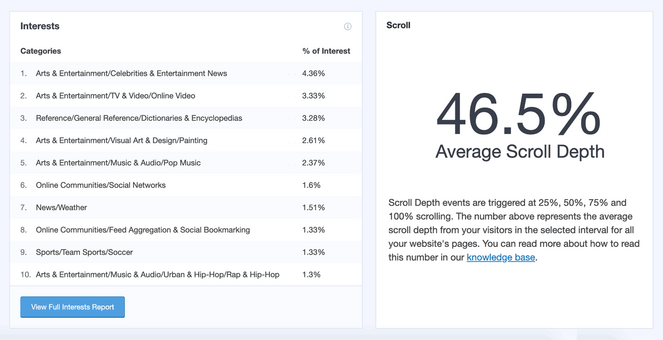One of the most well-liked and simple ways to monetize your blog is with Google Adsense. You can use it to place pertinent adverts on your blog entries and get paid when readers view or click on them. If your Google Adsense earnings aren't enough for you, though, you may be asking how to get more.

We'll provide you with seven suggestions in this blog post on how to boost Google Adsense revenue on your website. You may increase your click-through rate (CTR), enhance traffic, and optimize your adverts with the help of these tips.
7 Tips to Increase Your Adsense Earnings
Below are some of the 7 tips we are going to be sharing with you.
Ready to begin?
Let's dive in!
Tip 1: Optimize Your Blog Content and Keywords

The content and keywords of your blog mostly determine your Google Adsense profits. You'll receive more traffic and interaction from users the more high-quality and relevant your material is. You will produce more ad impressions and clicks the more traffic and engagement you receive.
You can use a tool like Semrush for your keyword research.
Additionally, Google Adsense's display of advertising on your blog depends on the kind and caliber of the content and keywords you use.
You will receive more targeted and relevant advertisements the more precise and pertinent your content and keywords are. Your CTR and revenues will increase with the number of relevant and targeted adverts you receive.
Tip 2: Create High-Quality Content
Increasing blog traffic is the first step towards increasing your Google AdSense income. Because you have more options to generate clicks the more traffic your blog receives.
You can try many different strategies to increase blog traffic, but none of them will work if your site doesn't have worthwhile, excellent content.
Having excellent content is what will draw readers to your blog. It will also prolong visitors' stay on your website. This will help you receive more visitors overall by lowering your bounce rate, enhancing the SEO of your blog, and raising your search engine ranks.
You can use plugins like MonsterInsight to check your posts that rank, and for those that are not well ranked, you can edit them and add more relevant keywords.
Tip 3: Experiment with Different Ad Formats and Positions
You can select from various ad layouts and locations with Google Adsense. Text, display, video, link, matched content, and other types of adverts are also available.
Additionally, you can position your ads in the sidebar, header, footer, or within, above, below, or within your text. All ad spots and formats are not suitable for every blog. As a result, you must test out various ad locations and formats to see which ones work best for your blog.
The Google Adsense Experiment tool allows you to test several ad variations and evaluate the differences in performance. You may monitor your ad performance and click-through rate (CTR) by using tools such as Google Analytics and MonsterInsights.
Tip 4: Design Your Blog to be User and Mobile-Friendly

The user-friendliness of your blog's design is crucial.
First of all, your blog won't work or appear decent on mobile devices if your theme or page isn't responsive. Visitors will stop visiting your blog as a result and go to a competitor's more mobile-friendly website.
Furthermore, almost 90% of all internet users worldwide access the internet through a mobile device. That means you can be missing out on a lot of clicks.
Another choice is to use a custom WordPress theme like Astra for your blog without knowing any code by using a website builder plugin like Elementor.
Tip 5: Enable AMP on Your Blog
Accelerated Mobile Pages, or AMP, is a technology that improves the speed and smoothness of your blog's mobile page loads. AMP enhances mobile user experience, boosts mobile traffic and CTR, and helps you make more money with Google Adsense.

You must install and activate the AMP plugin for WordPress in order to enable AMP on your blog. Your blog pages and posts will be automatically converted to AMP format using this plugin.
The plugin options allow you to further alter the look and feel of your AMP sites.
You must use the AMP for WP plugin, an extension of the AMP plugin, to display Google Adsense advertising on your AMP pages.
This plugin will allow you to insert Google Adsense ads on your AMP pages using shortcodes or widgets.
Tip 6: Use MonsterInsights to Track Scroll Depth
As we previously stated, you ought to position your advertisements in a prominent section of your website. In this manner, users are certain to see the ads and click on them.
The issue is, how can you be certain of the sections of your website that users focus on?
The MonsterInsights Scroll Tracking function makes it simple to learn. You can check how far users are scrolling on your blog posts or landing pages with the help of scroll depth tracking.
All you need to do is activate the MonsterInsights feature, and your WordPress blog will be configured with scroll tracking right now. After that, you can see the outcomes directly from your WordPress dashboard in the Publishers report's Scroll section.

You can observe that your website's average scroll depth is 46.5% if we apply the example from above.
To optimize your Google AdSense earnings in this situation, you would want to position your ads before this scroll depth.
Ads placed after this point won't get as many clicks and you won't make as much money because visitors won't be scrolling.
Tip 7: Follow Google Adsense Policies and Guidelines
In order to maximize your Google Adsense revenue, you must adhere to Google Adsense policies and guidelines. You must abide by the stringent guidelines set forth by Google Adsense in order to avoid being banned or facing penalties from the search engine.
The goals of these rules and regulations are to safeguard the rights and interests of users, publishers, advertisers, and Google. The following are some typical Google Adsense rules and regulations that you must abide by:
- Do not click on your own advertisements nor ask others to do so.
- Avoid manipulating or inflating your ad impressions or clicks using software, bots, or other techniques.
- Avoid placing your advertisements on websites that have illicit or forbidden content, such as gambling, violent, hostile, or adult content.
- Ads should not be placed on websites that employ cloaking, scraping, or keyword stuffing, as these practices are against Google's webmaster quality rules.
- Don't put more adverts on a single page or screen than what is permitted.
- Don't change the coding or how your adverts behave.
- Avoid arranging your adverts in a way that impedes navigation or user experience, such as with pop-ups, overlays, or floating advertising.
Conclusion
Google Adsense is a great way to make money from your blog. However, to increase your Google Adsense earnings, you need to optimize your ads, improve your traffic, and boost your CTR.
By following the tips we have shared in this blog post, you can easily increase your Google Adsense earnings on your blog.
We hope this blog post has helped you learn how to increase Google Adsense earnings on your blog.
Happy blogging!











